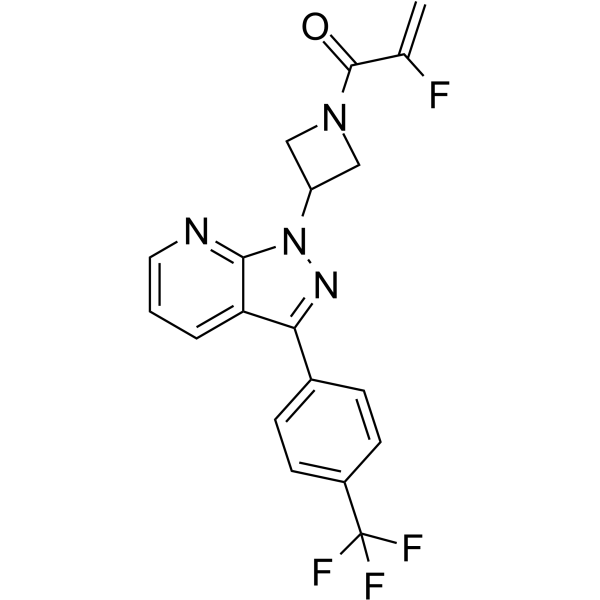YAP
The transcriptional coactivator Yes-associated protein (YAP) is a major regulator of organ size and proliferation in vertebrates. As such, YAP can act as an oncogene in several tissue types if its activity is increased aberrantly. YAP enhances multiple processes known to be important for tumor progression and metastasis, including cellular proliferation, transformation, migration, and invasion.
Targets for YAP
Products for YAP
- Cat.No. Product Name Information
-
GC69847
(R)-VT104
(R)-VT104 is the R-enantiomer of VT104. The IC50 value of (R)-VT104 for firefly luciferase is 0.1-1 μμ. VT104 is an orally active pan-TEAD deacetylase inhibitor.
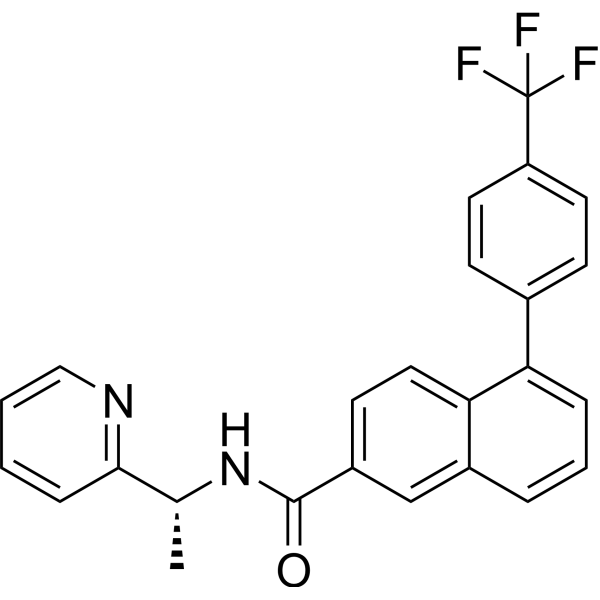
-
GC65116
GA-017
GA-017 is a potent and selective LATS1 and LATS2 (large tumor suppressor kinase 1/2) inhibitor, with IC50 values of 4.10 and 3.92 nM, respectively. GA-017 is an activator of cell proliferation. GA-017 promotes YAP/TAZ activation and nuclear translocation. GA-017 promotes cell growth under 3D culture conditions. GA-017 enhances the ex vivo formation of mouse intestinal organoids.
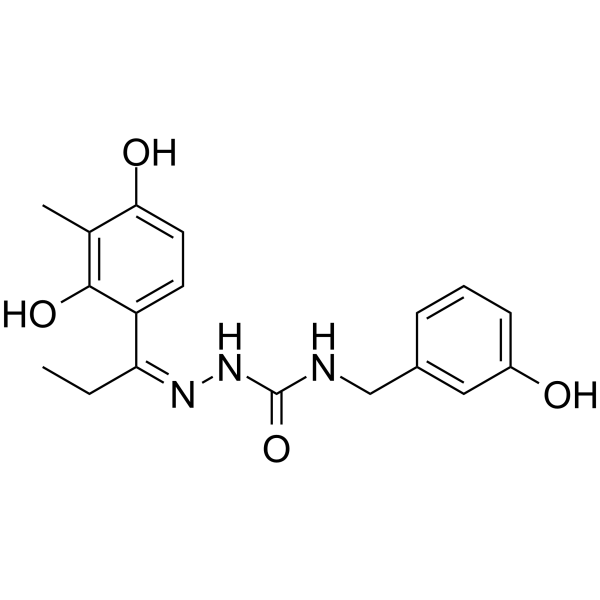
-
GC62132
K-975
K-975 is a potent, selective and orally active TEAD inhibitor, with a strong inhibitory effect against protein-protein interactions between YAP1/TAZ and TEAD. K-975 covalently binds to Cys359 located in the palmitate-binding pocket of TEAD via an acrylamide structure. K-975 exhibits antitumor activity on malignant pleural mesothelioma.
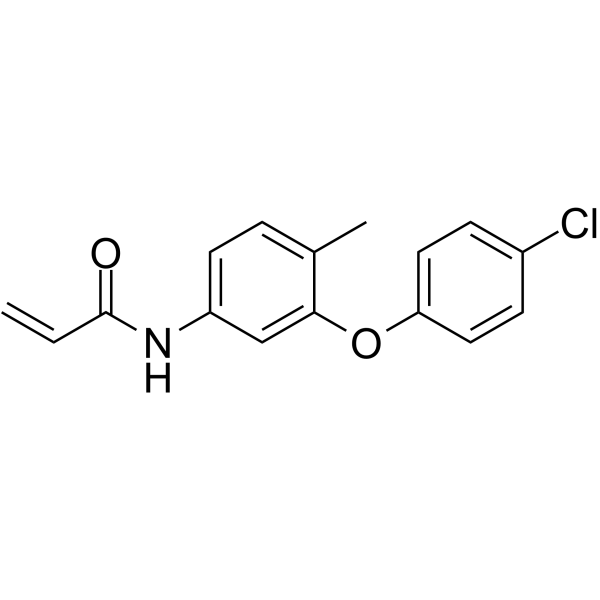
-
GC61527
Lats-IN-1
Lats-IN-1 is a potent and ATP-competitive inhibitor of Lats1 and Lats2 kinases.
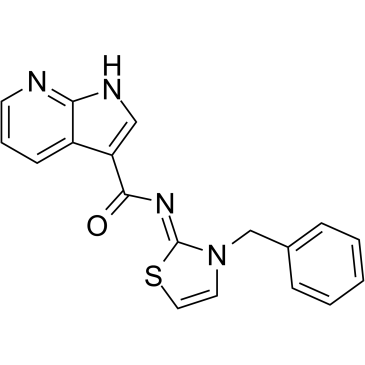
-
GC65993
MSC-4106
MSC-4106 is an orally active and potent inhibitor of YAP/TAZ-TEAD. MSC-4106 inhibits TEAD1 or TEAD3 auto-palmitoylation and shows inhibitory effect on NCI-H226 tumor xenograft model.
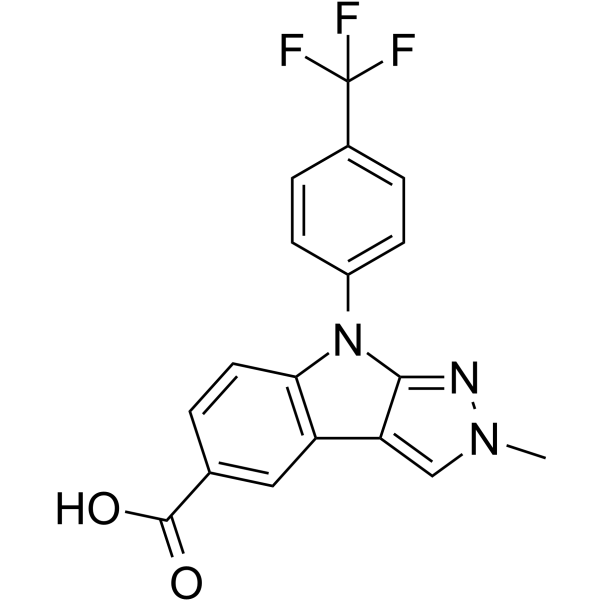
-
GC63088
MYF-01-37
MYF-01-37 is a covalent TEAD inhibitor targeting Cys380. MYF-01-37 has a reversible inhibition on YAP/TEAD interaction.
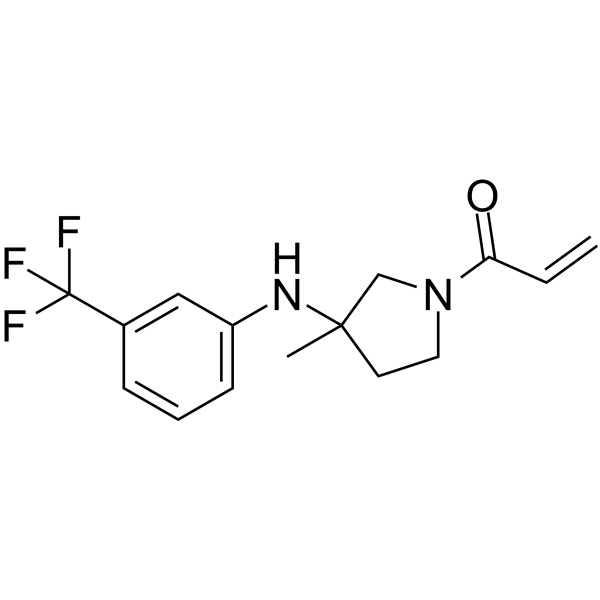
-
GC62424
PY-60
PY-60 is a robust and specific activator of YAP transcriptional activity that targets annexin A2 (ANXA2) with a Kd of 1.4 ?M.
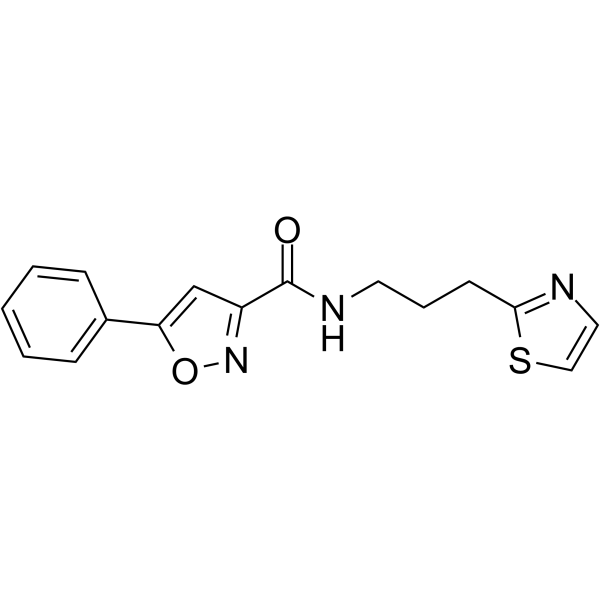
-
GC61781
Super-TDU
Super-TDU is a specific YAP antagonist targeting YAP-TEADs interaction. Super-TDU suppresses tumor growth in gastric cancer mouse model.
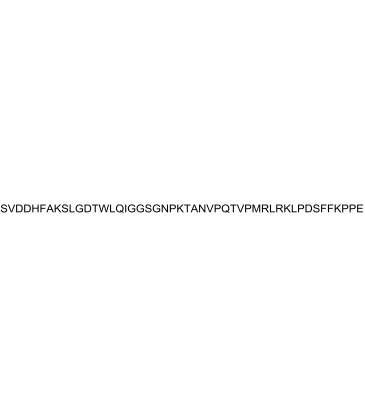
-
GC37704
Super-TDU (1-31) TFA
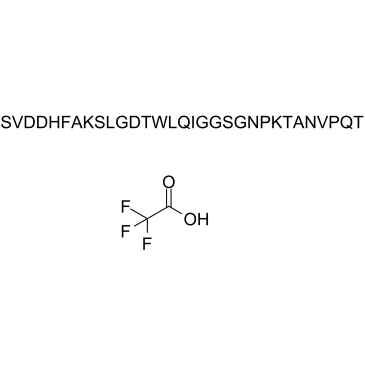
-
GC34818
Super-TDU 1-31
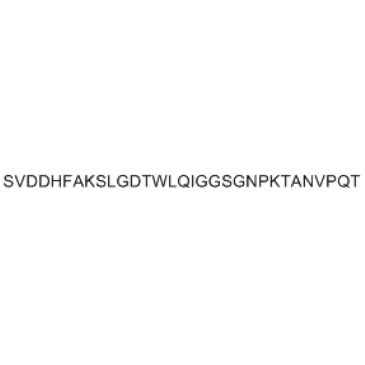
-
GC65889
TDI-011536
TDI-011536 is a potent Lats kinase inhibitor, interrupts Hippo-Yap signaling and initiates the proliferation of lesioned heartmuscle cells. TDI-011536 can be used in studies of organ conservation and regeneration.
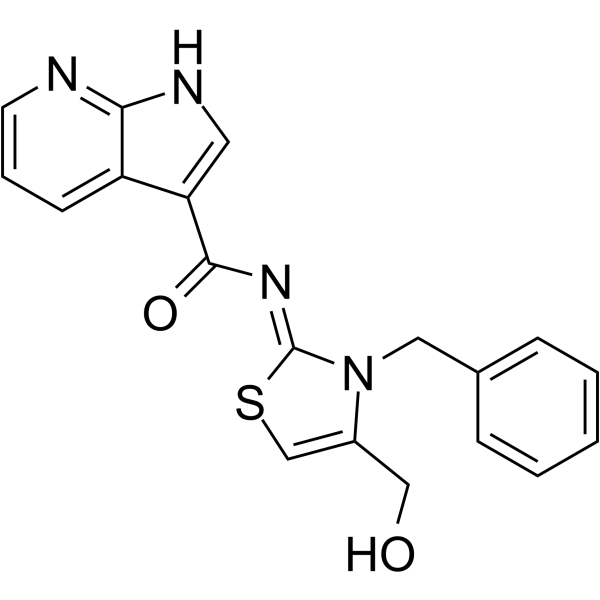
-
GC65185
TEAD-IN-2
TEAD-IN-2 is a novel, orally active inhibitor of transcriptional enhancer associate domain (TEAD) and modulates TEAD by ubiquitination and/or degradation by compounds. TEAD-IN-2 can be used for the research of a variety of diseases, disorders or conditions associated with TEAD.
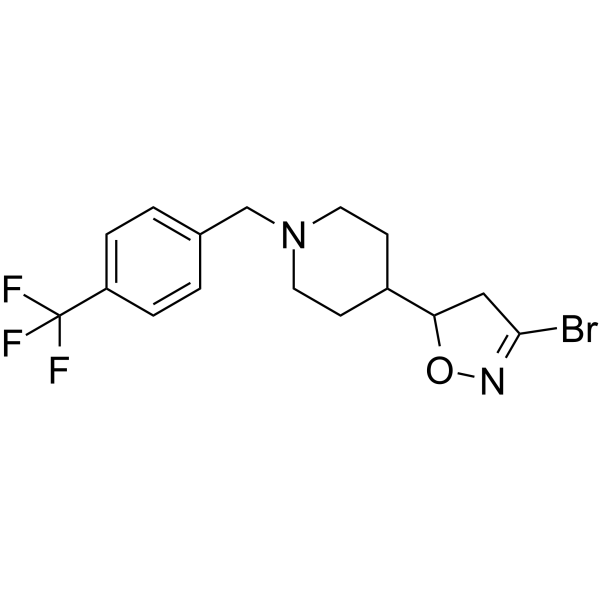
-
GC70003
TEAD-IN-3
TEAD-IN-3 (compound I-177) is an effective inhibitor of the TEAD transcription factor. TEAD-IN-3 can be used for research on proliferative diseases such as cancer.
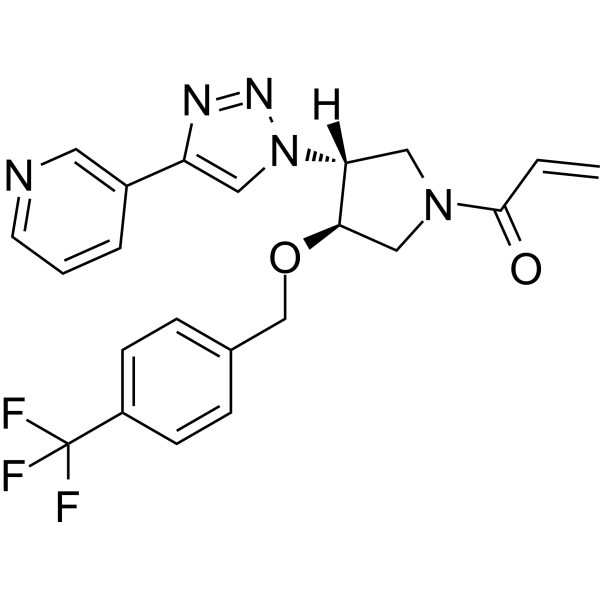
-
GC14482
Verteporfin
Verteporfin is a potent inhibitor of PD-L1 expression used for treatment in the age-related macular degeneration , port-wine stain birthmarks and cancer.
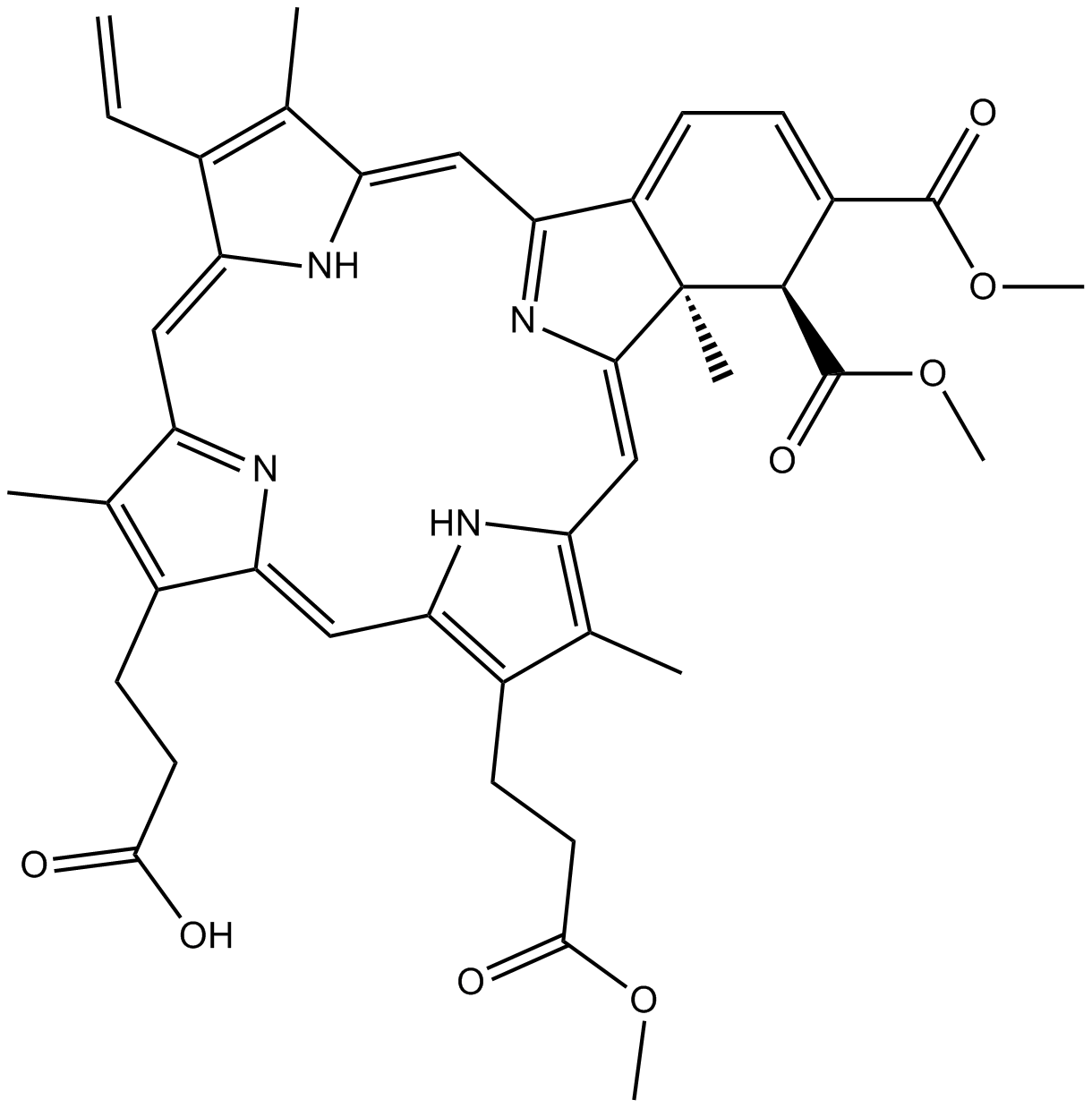
-
GC70131
VT02956
VT02956 is a LATS inhibitor (IC50: 0.76 nM for LATS1 and 0.52 nM for LATS2). It targets the Hippo signaling pathway and inhibits the growth of ER+ breast cancer cell lines and tumor organoids derived from patients, as well as ESR1 expression.
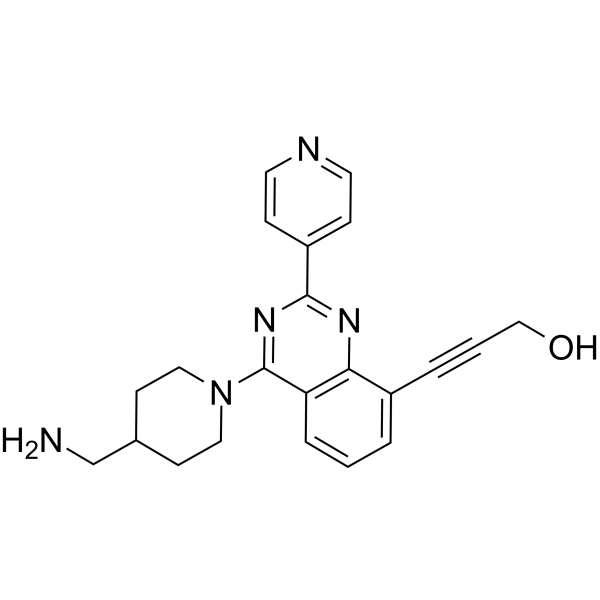
-
GC63257
VT103
VT103, an analog of VT101, is an orally active and selective TEAD1 protein palmitoylation inhibitor. VT103 inhibits YAP/TAZ-TEAD promoted gene transcription, blocks TEAD auto-palmitoylation, and disrupts interaction between YAP/TAZ and TEAD. VT103 can be used for the research of cancer.
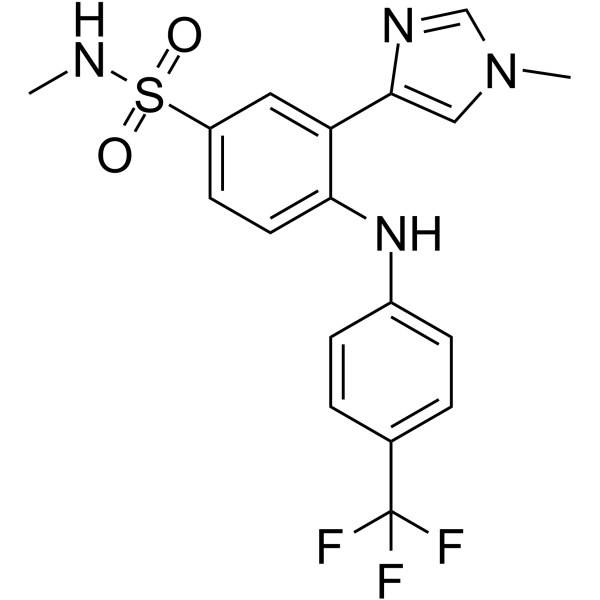
-
GC70132
VT104
VT104 is an orally effective inhibitor of YAP/TAZ. It prevents the palmitoylation of endogenous TEAD1 and TEAD3 proteins. VT104 can be used in cancer research.
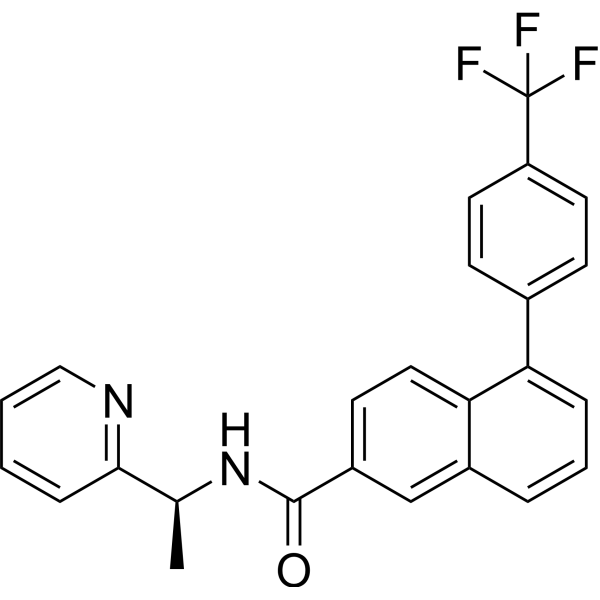
-
GC62524
VT107
VT-107, as an analogous to VT104, is an orally active and potent pan-TEAD auto-palmitoylation inhibitor. VT-107 can be used for the research of cancer.
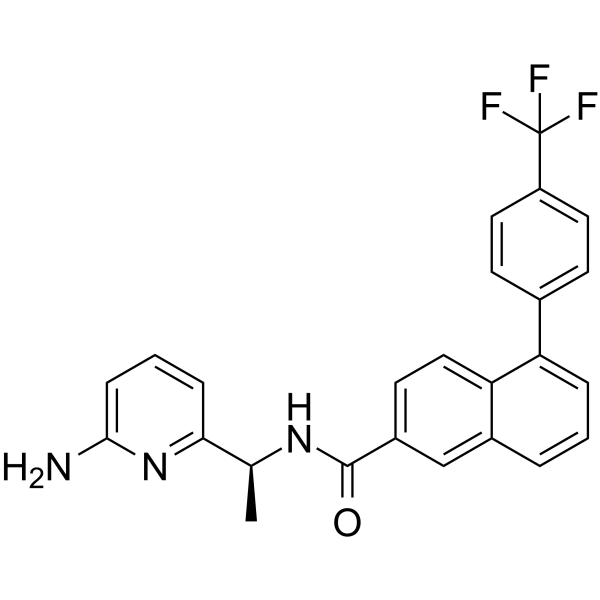
-
GC26088
YAP-TEAD Inhibitor 1 (Peptide 17)
YAP-TEAD Inhibitor 1 (Peptide 17) is a YAP-TEAD protein-protein interaction inhibitor which has potential usage in treatment of YAP-involved cancers with IC50 of 25 nM.
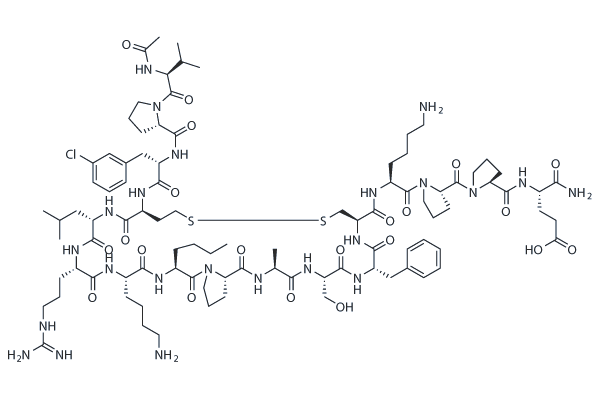
-
GC39461
YAP-TEAD-IN-1 TFA
YAP-TEAD-IN-1 TFA is a potent and competitive peptide inhibitor of?YAP-TEAD interaction (IC50=25 nM). YAP-TEAD-IN-1 TFA is a 17mer peptide and shows a higher the binding affinity to TEAD1 (Kd=15 nM) than YAP (50-171) (Kd= 40 nM).
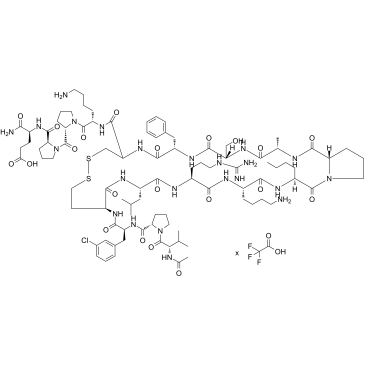
-
GC65131
YAP/TAZ inhibitor-2
YAP/TAZ inhibitor-2 is a potent and orally active TEAD-YAP/TAZ inhibitor with an EC50 value of 3 nM. YAP/TAZ inhibitor-2 shows anti-proliferative activity. YAP/TAZ inhibitor-2 shows antitumor activity.
